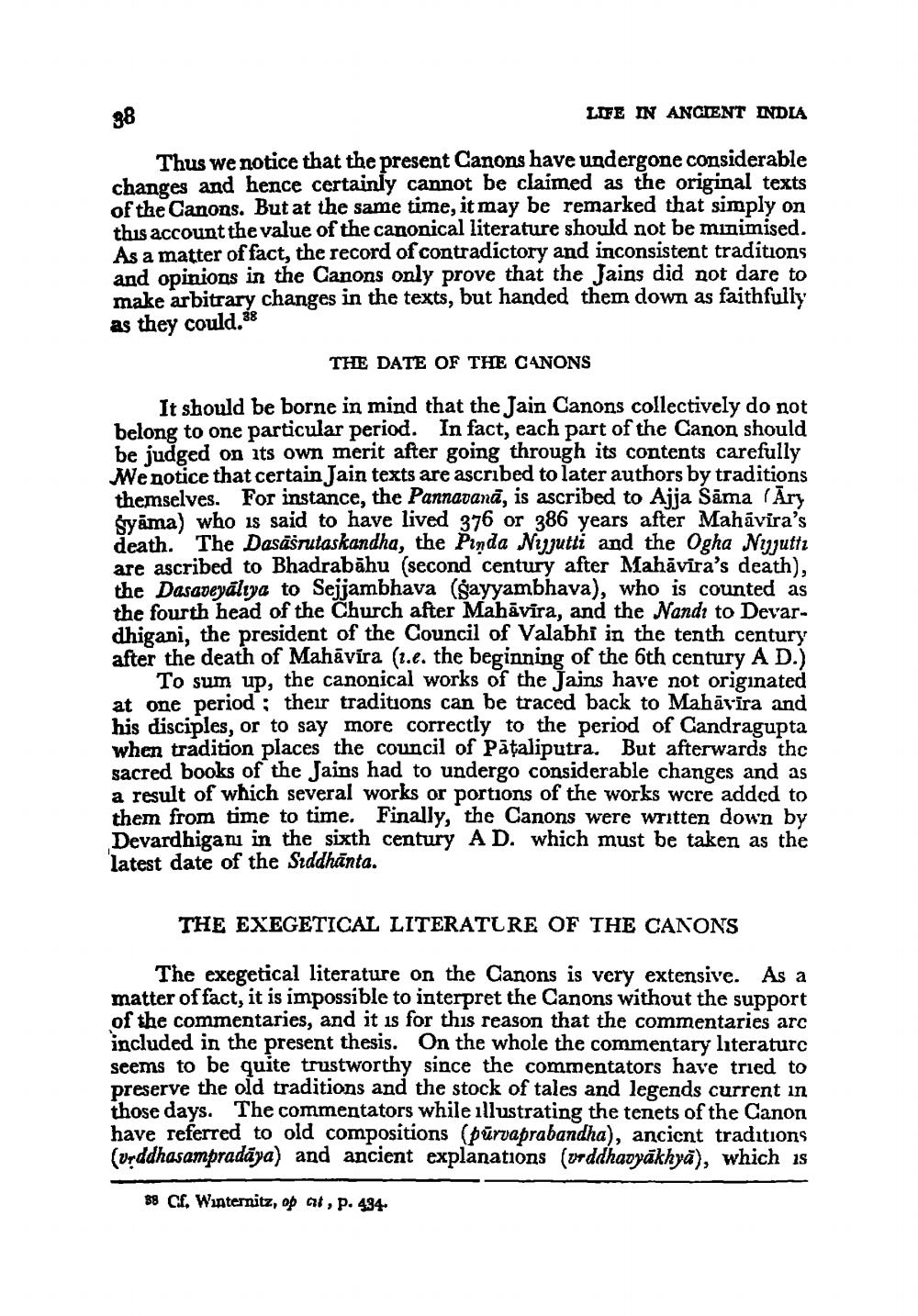________________
88
LIFE IN ANCIENT INDIA
Thus we notice that the present Canons have undergone considerable changes and hence certainly cannot be claimed as the original texts of the Canons. But at the same time, it may be remarked that simply on this account the value of the canonical literature should not be minimised. As a matter of fact, the record of contradictory and inconsistent traditions and opinions in the Canons only prove that the Jains did not dare to make arbitrary changes in the texts, but handed them down as faithfully as they could.38
THE DATE OF THE CANONS
It should be borne in mind that the Jain Canons collectively do not belong to one particular period. In fact, each part of the Canon should be judged on its own merit after going through its contents carefully We notice that certain Jain texts are ascribed to later authors by traditions themselves. For instance, the Pannavanā, is ascribed to Ajja Säma (Ary Syama) who is said to have lived 376 or 386 years after Mahavira's death. The Dasäsrutaskandha, the Panda Nuutti and the Ogha Njuttı are ascribed to Bhadrabāhu (second century after Mahavira's death), the Dasaveyaltya to Sejjambhava (gayyambhava), who is counted as the fourth head of the Church after Mahāvira, and the Nandi to Devardhigani, the president of the Council of Valabhi in the tenth century after the death of Mahāvíra (1.e. the beginning of the 6th century AD.)
To sum up, the canonical works of the Jains have not originated at one period; their traditions can be traced back to Mahāvīra and his disciples, or to say more correctly to the period of Candragupta when tradition places the council of Pataliputra. But afterwards the sacred books of the Jains had to undergo considerable changes and as a result of which several works or portions of the works were added to them from time to time. Finally, the Canons were written down by Devardhiganı in the sixth century AD. which must be taken as the latest date of the Siddhānta.
THE EXEGETICAL LITERATURE OF THE CANONS
The exegetical literature on the Canons is very extensive. As a matter of fact, it is impossible to interpret the Canons without the support of the commentaries, and it is for this reason that the commentaries are included in the present thesis. On the whole the commentary literature seems to be quite trustworthy since the commentators have tried to preserve the old traditions and the stock of tales and legends current in Those days. The commentators while illustrating the tenets of the Canon have referred to old compositions (pūrvaprabandha), ancient traditions (Urddhasampradāya) and ancient explanations (urddharyakhyā), which is
88 Cf. Winternitz, op at, p. 494




